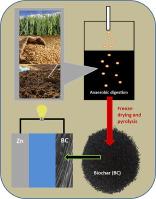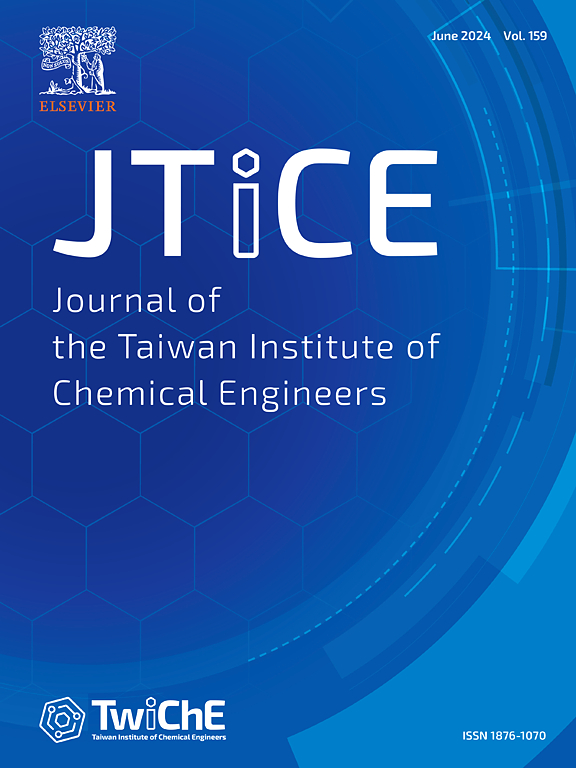Biochar from residues of anaerobic digestion and its application as electrocatalyst in Zn–air batteries
IF 6.3
3区 工程技术
Q1 ENGINEERING, CHEMICAL
Journal of the Taiwan Institute of Chemical Engineers
Pub Date : 2024-11-14
DOI:10.1016/j.jtice.2024.105826
引用次数: 0
Abstract
Background
Biochar, the product obtained by pyrolysis of biomass, is a new eco-friendly material with excellent properties and many promising applications. Among them it can be used as cathode in Zn-air batteries with very satisfactory results
Methods
The residue was obtained by anaerobic digestion of a mixture of corn silage (10%), malt (10%), and cattle manure (80%), aiming to biogas production. It was first freeze–dried and then it was subjected to pyrolysis up to 800oC.
Significant findings
The biochar was physicochemically characterized. It has moderate specific surface area, sufficient sp2/sp3 ratio and metal and non–metal surface chemical species. The biochar demonstrated satisfactory electrocatalytic performance, both as oxygen reduction and oxygen evolution catalyst. When applied as electrocatalyst in Zn–air batteries it reached an open–circuit potential of 1.45 V, a short–circuit current density of 200 mA cm–2 and maximum power density of around 62 mW cm–2. Its energy density was 927 Wh kg–1, (at 20 mA), and 518 Wh kg–1 (at 100 mA). In a charge–discharge mode at 10 mA, the potential varied between 1.35 and 1.90 V. These data, show that the waste biomass can be used as inexpensive material for Zn–air batteries and offers a useful approach to combine waste management with energy storage.

厌氧消化残渣中的生物炭及其在锌-空气电池中作为电催化剂的应用
背景生物炭是生物质热解的产物,是一种新型的环保材料,具有优良的性能和广阔的应用前景。其中,它可用作锌-空气电池的阴极,效果非常令人满意方法残渣是通过厌氧消化玉米青贮(10%)、麦芽(10%)和牛粪(80%)的混合物获得的,目的是生产沼气。首先对其进行冷冻干燥,然后在 800 摄氏度的高温下进行热解。它具有适度的比表面积、足够的 sp2/sp3 比率以及金属和非金属表面化学物种。作为氧还原和氧进化催化剂,生物炭的电催化性能令人满意。在锌-空气电池中用作电催化剂时,它的开路电位为 1.45 V,短路电流密度为 200 mA cm-2,最大功率密度约为 62 mW cm-2。其能量密度为 927 Wh kg-1(20 mA 时)和 518 Wh kg-1(100 mA 时)。这些数据表明,废弃生物质可用作锌空气电池的廉价材料,并为废物管理与能源储存相结合提供了一种有用的方法。
本文章由计算机程序翻译,如有差异,请以英文原文为准。
求助全文
约1分钟内获得全文
求助全文
来源期刊
CiteScore
9.10
自引率
14.00%
发文量
362
审稿时长
35 days
期刊介绍:
Journal of the Taiwan Institute of Chemical Engineers (formerly known as Journal of the Chinese Institute of Chemical Engineers) publishes original works, from fundamental principles to practical applications, in the broad field of chemical engineering with special focus on three aspects: Chemical and Biomolecular Science and Technology, Energy and Environmental Science and Technology, and Materials Science and Technology. Authors should choose for their manuscript an appropriate aspect section and a few related classifications when submitting to the journal online.

 求助内容:
求助内容: 应助结果提醒方式:
应助结果提醒方式:


